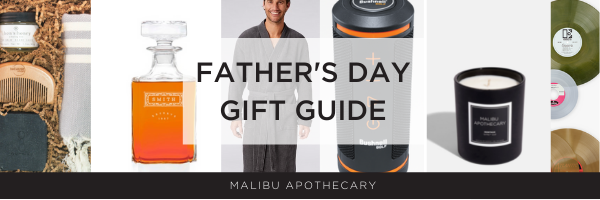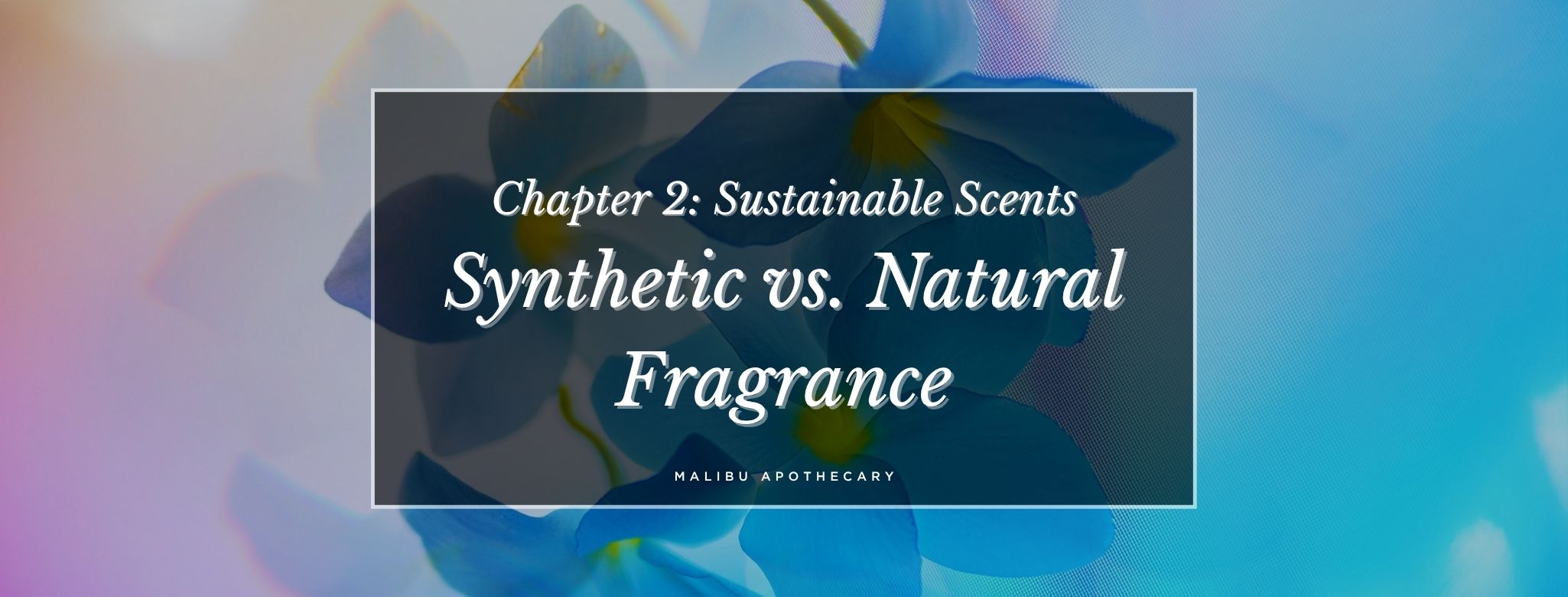In today's world, people are becoming increasingly aware of the importance of clean, non-toxic products. This includes the fragrances we use in our daily lives. Malibu Apothecary is a clean, non-toxic fragrance company that is dedicated to creating fragrances that not only smell amazing but are also safe for you and the environment. We will explore the differences between natural and lab-made scents, including details on the yield of materials to essential oils.
Whenever people see the term “natural” they automatically think that it is the best and most sustainable option. However, sometimes the natural option is actually more harmful than it is beneficial. This is when synthetics come into play. Let's discuss the differences and when each one should or should not be used.
What are Synthetics?
Let’s review…
Synthetic fragrances contain chemicals that are man-made and not of a natural origin. By contrast, natural fragrances are of natural origin containing only plant based ingredients. Synthetic fragrances are chemically created and usually derived from petroleum or started as a natural and evolved through chemical modification. Not all synthetic fragrances are bad and many fragrances contain a mixture of synthetic scents and essential oils. When you think of fragrance, terms such as phthalates and parabens may come to mind. While these can be found in non-natural fragrances, synthetics can be made without such toxins.
There are many benefits to using synthetic fragrances including scent performance, range of olfactive expression, flexibility, novelty, affordability, complexity, accessibility, longevity, environmental sustainability, and even safety.
If you read our blog on The Truth Behind Synthetic Fragrances, then you know synthetic fragrances are not inherently bad. These scents can be safer and more sustainable: classic or fad. Devastating our forests and ecosystems for fragrant aromas like oud, really do way more damage than a synthetic would...and just because something is natural, doesn’t mean it should be burned or put on your skin - looking at you poison ivy!
Breathing and burning real essential oils could give you an allergy, even if it comes from a plant or a tree.
What are natural fragrances?
A natural is simply what you would expect it to be - something that comes from the planet. It is fully natural, meaning it can be found in nature. However, you can’t just grab lavender from your backyard and call it a perfume. It does still need to go through some processing. The processing is kept minimal but is needed to turn it into an essential oil or a fragrance.
Natural aromas come from plants via extractions and are complex combinations of essential oils and concentrates.
At Malibu Apothecary, we use a mixture of essential oils and SAFE synthetic ingredients, when it is more sustainable than the essential oil option or less allergen-inducing. For example, the essential oil of oud is often illegally logged and contributes to deforestation in their endemic, often endangered areas while some ingredients like vanilla bean take an exorbitant amount of water to produce. In these cases, we opt for a sustainable and safe synthetic.
We steer extremely clear of banned ingredients and compounds that have any or contain possible carcinogens (ex. parabens) and toxins including those that cause reproductive harm (ex. phthalates), neurotoxicity, environmental harm, organ toxicity or irritation, DNA cell damage, and endocrine disruption. Natural essential oils are always our first choice, but if a natural ingredient fails on sustainability requirements or is allergen-inducing, we look to safe synthetics.
The Yield of Materials to Essential Oils
Oftentimes, natural ingredients have a very high environmental cost, making them less sustainable in the grand scheme of things. Both synthetic and naturally occurring ingredients have an impact on our environment so it is important to be conscious of when to use each form.
The yield of materials to essential oils can vary greatly depending on the type of material used. For example, it takes around 1 ton of rose petals to create just 1 pound of rose essential oil. Gardenia essential oil, on the other hand, requires a whopping 2,000 pounds of gardenia flowers to create just 1 pound of oil.
There are many factors that contribute to the decision of which to use. A major one is how much water does it require to produce? As we mentioned earlier, vanilla beans take a ridiculous amount of water to produce. Specifically, it takes an estimated 15,159 gallons of water to equate to one pound of vanilla bean.
There are several essential oils that have very low yields due to the large amount of plant material required to produce a small amount of essential oil. Some examples include:

These oils are considered to be some of the most expensive essential oils due to their low yield and the high amount of plant material required to produce them.
Another question we need to ask is what will happen to the planet after the fact? If the plant will be treated with pesticides or if the land will be ruined then a synthetic is the preferred option.2
Furthermore, what will happen to the ecosystem? Taking natural ingredients could heavily affect an ecosystem in many ways that most people would not even consider. Bees are a major aspect of this. Many products utilize bees for their wax or pollen. However, if we continue to kill bees we lose a major component of our food supply. Therefore, synthetic beeswax is an awesome substitute.2
That being said, there is a need and place for both natural and man-made synthetic fragrances. A natural ingredient that is sustainable and irreplace is Polypodium leucotomos extract. It is naturally sourced and highly beneficial for humans. This is a case where a synthetic is not needed. It is highly important to still use and appreciate natural products that come from trusted brands.

Above all, both synthetics and naturals are important to the fragrance creation process. We advocate for whatever is the most sustainable for our planet and bodies. However, always do your research and when in doubt - ask questions!
At Malibu Apothecary, we carefully consider the yield of materials to essential oils when sourcing our materials. We strive to use sustainable and ethical sources whenever possible to create our fragrances. We are committed to creating fragrances that are not only clean and non-toxic but also environmentally friendly and sustainable. We use a combination of natural and lab-made scents to create fragrances that smell amazing and are safe for use.
Sources[1] Anthony J. OLenick, Jr. “Comparatively Speaking: Natural vs. Synthetic Fragrance.” Cosmetics & Toiletries, www.cosmeticsandtoiletries.com/formulating/function/fragrance/136099708.html.
[2] “ARE SYNTHETICS MORE SUSTAINABLE THAN NATURAL INGREDIENTS?” Aether Beauty, athrbeauty.com/blogs/goodvibesbeauty/are-synthetics-more-sustainable-than-natural-ingredients.
[3] Georgia Murray, Anna Jay. “Natural Vs Synthetic Beauty: Have We Got It All Wrong?” Natural Or Synthetic Beauty Which Is Better, www.refinery29.com/en-gb/2017/10/177954/synthetic-natural-beauty-ingredients.
Read more

Happy almost Summer! You know what that means - beach days, bikinis, summer candles, ice cream, sunsets…and Father’s Day! If you’re anything like us, Father’s day always sneaks up amidst the busy s...

Which sunscreens were found to contain benzene? Your safe & sustainable guide to sunscreen. How to shop for sunscreen safely? What is Benzene? What are the best sunscreens by price, coral reef...

Leave a comment
All comments are moderated before being published.
This site is protected by hCaptcha and the hCaptcha Privacy Policy and Terms of Service apply.